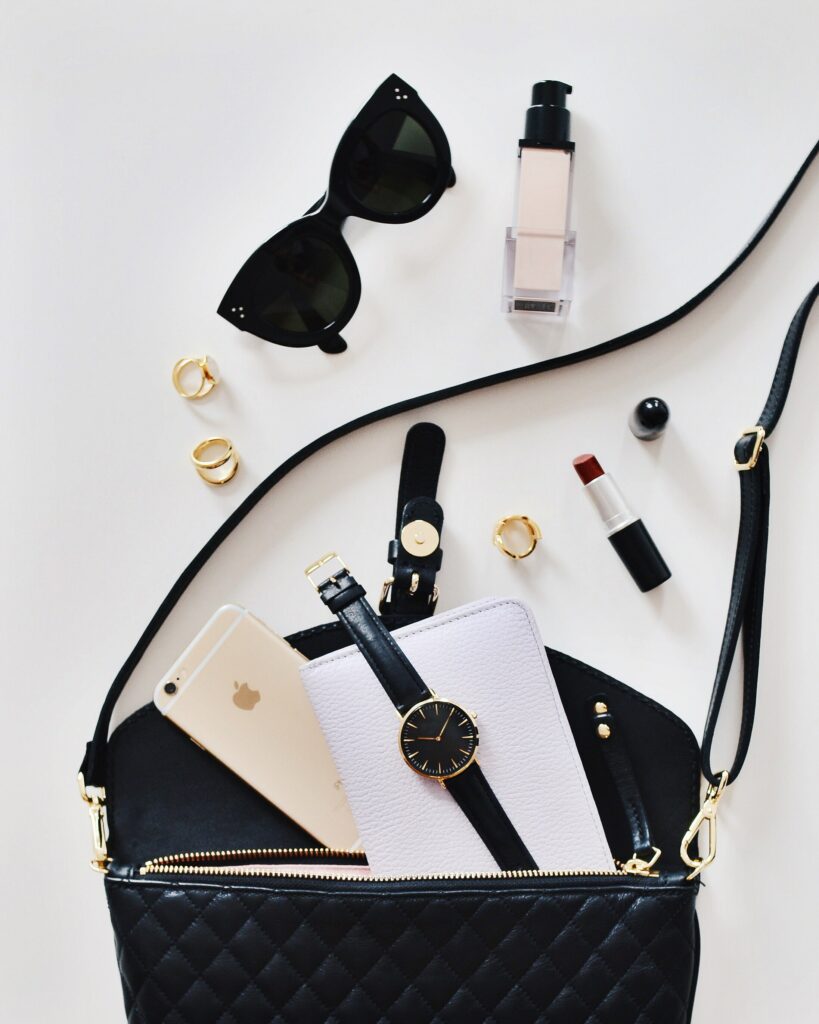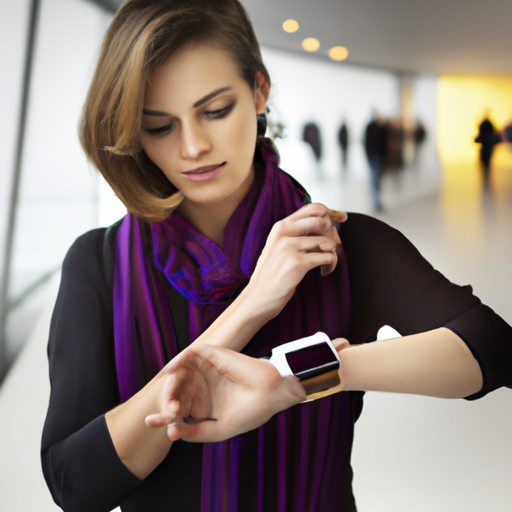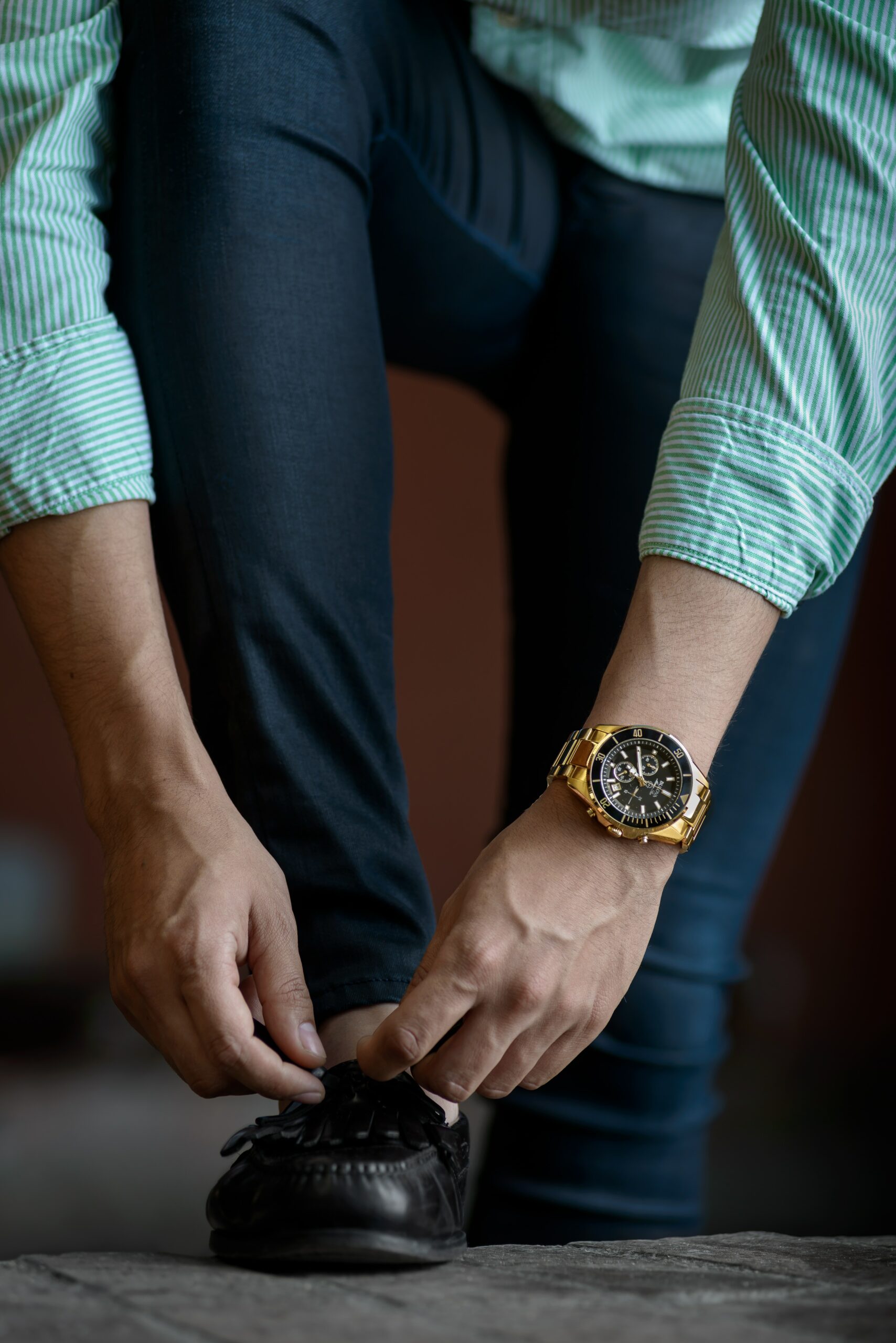Imagine a world where technology seamlessly integrates into your personal style, enhancing your fashion choices rather than detracting from them. Introducing Smart Fashion, the innovative wearable tech that not only keeps you connected but also complements your unique sense of style. With sleek designs and advanced features, Smart Fashion is bridging the gap between fashion and technology, allowing you to stay on-trend without compromising on functionality. Say goodbye to clunky gadgets and hello to a new era of fashion-forward technology.
1. Definition of Smart Fashion
1.1 What is Smart Fashion?
Smart Fashion refers to the integration of technology into clothing and accessories, combining style and functionality to enhance the wearer’s experience. It merges the world of fashion with the capabilities of wearable technology, creating a new category of clothing that not only looks good but also provides innovative features and benefits.
1.2 Evolution of Wearable Tech
Wearable technology has come a long way over the years, evolving from basic fitness trackers to sophisticated smartwatches and smart jewelry. The concept of incorporating technology into fashion has gained momentum with advancements in miniaturization, battery life, and connectivity. As a result, wearable tech has become more fashionable and seamlessly integrated into our everyday lives.
2. Popular Examples of Smart Fashion
2.1 Smartwatches
Smartwatches have gained immense popularity in recent years due to their ability to connect to smartphones and provide a wide range of features. These fashionable timepieces not only display the time but also allow you to receive calls, read messages, track your fitness, and even make payments. With customizable watch faces and interchangeable bands, smartwatches have become a stylish accessory that complements your personal style.
2.2 Fitness Trackers
Fitness trackers, also known as activity trackers, have revolutionized the way we monitor our health and fitness. These sleek and lightweight devices can track your steps, calories burned, heart rate, sleep patterns, and much more. With the help of smartphone apps, you can set goals, analyze your progress, and even compete with friends. Fitness trackers not only encourage a healthier lifestyle but also offer a modern and stylish way to stay motivated.
2.3 Smart Jewelry
Smart jewelry combines fashion with technology by embedding sensors and connectivity features into stunning pieces of jewelry. From smart rings to smart bracelets, these accessories can track your activity levels, notify you of incoming calls and messages, and even send out emergency alerts. Smart jewelry merges functionality with elegance, allowing you to stay connected while adding a touch of sophistication to your outfit.

3. Benefits of Smart Fashion
3.1 Style and Functionality
Smart Fashion provides the perfect blend of style and functionality, allowing you to express your personal taste while staying connected and informed. Instead of sacrificing fashion for technology or vice versa, you can now have both. Whether you prefer a sleek smartwatch or a chic piece of smart jewelry, these accessories elevate your style while offering a range of useful features.
3.2 Customization and Personalization
One of the biggest advantages of smart fashion is the ability to customize and personalize your devices. With various watch faces, bands, and accessory options available, you can tailor your wearable tech to match your outfit or mood. Additionally, many smart fashion devices allow you to set personal goals, receive personalized recommendations, and adjust settings according to your preferences.
3.3 Health and Fitness Tracking
Smart fashion plays a significant role in promoting health and fitness by enabling you to monitor your activity levels, heart rate, and sleep patterns. Whether you’re a fitness enthusiast looking to improve your performance or someone seeking to lead a healthier lifestyle, these devices provide valuable insights and motivation. By tracking your progress, setting goals, and receiving real-time feedback, you can take control of your health and well-being.
4. Integrating Technology into Fashion
4.1 Seamless Integration
One of the key challenges in smart fashion is achieving seamless integration between technology and fashion. Designers and engineers are continuously pushing boundaries to ensure that wearable tech devices are aesthetically pleasing and comfortable to wear. From lightweight materials to flexible displays, efforts are being made to create devices that seamlessly blend into our everyday lives without compromising on style.
4.2 User Interface and Accessibility
Incorporating technology into fashion also requires user-friendly interfaces and ease of accessibility. Manufacturers are focusing on creating intuitive interfaces that allow users to navigate through different functions effortlessly. Touchscreens, voice commands, and gesture recognition are some of the ways smart fashion devices are enabling easy interaction. Moreover, efforts are being made to improve accessibility features for individuals with disabilities, ensuring that everyone can benefit from smart fashion.
4.3 Materials and Fabrics
Smart fashion not only requires technological advancements but also innovative materials and fabrics that can withstand everyday use. From waterproof coatings to fabrics that can sense and react to changes in the environment, research and development in this area are essential. Designers are exploring the use of conductive threads, advanced polymers, and even biodegradable materials to create sustainable and functional smart fashion garments.

5. Challenges in Smart Fashion
5.1 Battery Life and Power Management
One of the significant challenges in smart fashion is ensuring adequate battery life and efficient power management. Technological features require energy, and wearable devices need to balance functionality with battery longevity. Manufacturers are continuously working on improving battery technology, exploring alternative energy sources, and optimizing power consumption to enhance the user experience.
5.2 Privacy and Data Security
With the collection of personal data through wearable devices, privacy and data security become critical concerns. Manufacturers need to prioritize privacy by implementing robust security measures and ensuring that user data is protected. Encryption, secure cloud storage, and user consent features are some of the strategies being employed to address these concerns and build trust among consumers.
5.3 Compatibility and Interoperability
In a rapidly advancing market, achieving compatibility and interoperability among different smart fashion devices can be challenging. Users often expect seamless integration between various wearable tech products, allowing them to access and manage data across different platforms. Industry collaborations and standardization efforts are key to addressing this challenge and ensuring a cohesive and interconnected smart fashion ecosystem.
6. Future Trends in Smart Fashion
6.1 AI and Machine Learning
Artificial Intelligence (AI) and Machine Learning are poised to transform the landscape of smart fashion. By analyzing data collected from wearable devices, AI algorithms can provide personalized recommendations, predictive insights, and even generate real-time outfit suggestions. With advancements in AI technology, smart fashion devices can become more intuitive, adapting to the user’s preferences and evolving fashion trends.
6.2 Augmented Reality (AR) Integration
Augmented Reality (AR) integration opens up exciting possibilities in smart fashion. Imagine being able to virtually try on clothes and accessories, instantly seeing how they look and fit without physically trying them on. AR technology can revolutionize the way we shop for fashion, providing a personalized and immersive experience. From virtual fitting rooms to AR-enhanced fashion shows, the integration of AR into smart fashion holds great potential.
6.3 Sustainable and Eco-friendly Design
As sustainability becomes a growing concern, smart fashion can contribute to eco-friendly practices. By using recycled materials, incorporating energy-efficient technologies, and adopting sustainable manufacturing processes, smart fashion can minimize its environmental impact. Designers and manufacturers are exploring innovative ways to create smart fashion that is both functional and sustainable, ensuring a better future for fashion and the planet.

7. Impact of Smart Fashion on Industries
7.1 Fashion and Retail
The integration of technology into fashion has a profound impact on the fashion and retail industry. With the rise of e-commerce and the increasing demand for personalized experiences, smart fashion provides retailers with new opportunities to engage customers and create unique shopping experiences. From virtual try-on features to personalized recommendations, smart fashion is reshaping the way we shop and interact with fashion brands.
7.2 Health and Fitness
Smart fashion devices are revolutionizing the health and fitness industry by empowering individuals to take control of their well-being. These devices not only track physical activity but also provide valuable data and insights that can be used for preventive healthcare and personalized fitness plans. From doctors and fitness trainers to individuals looking to improve their health, smart fashion has the potential to revolutionize the way we approach healthcare and fitness.
7.3 Technology and Innovation
The integration of technology into fashion is driving innovation and pushing the boundaries of what is possible. The collaboration between tech companies, fashion designers, and researchers is fostering creativity and paving the way for new breakthroughs. Smart fashion serves as a catalyst for technological advancements, inspiring inventors and entrepreneurs to explore the intersection of fashion and technology in ways we have yet to imagine.
8. Consumer Adoption and Market Growth
8.1 Increased Consumer Interest
Consumer interest in smart fashion is on the rise as more people recognize the benefits and potential of wearable tech. The convenience, style, and functionality offered by these devices have captured the attention of fashion enthusiasts, fitness enthusiasts, and tech-savvy individuals. As smart fashion becomes more accessible and affordable, we can expect an increase in consumer adoption and a shift towards a more tech-driven fashion landscape.
8.2 Market Size and Revenue Projections
The smart fashion market is poised for significant growth in the coming years. According to research, the global smart fashion market is projected to reach a value of billions of dollars by [insert year], driven by advancements in technology, increasing consumer awareness, and rising demand for connected devices. As more companies enter the market and innovation continues to thrive, the smart fashion industry is set to revolutionize the way we dress and accessorize.
8.3 Emerging Startups and Innovations
The rise of smart fashion has opened up opportunities for startups and entrepreneurs to enter the market with innovative ideas and disruptive technologies. From startups focusing on sustainable smart fashion to those exploring niche markets, these emerging players are driving innovation and shaping the future of the industry. With the support of investors and industry collaborations, smart fashion startups are poised to make a significant impact in the market.

9. Conclusion
Smart fashion, with its integration of technology into clothing and accessories, offers a compelling combination of style, functionality, and innovation. From smartwatches to fitness trackers and smart jewelry, these devices enhance our daily lives while allowing us to express our personal style. As the industry continues to evolve and overcome challenges, we can expect exciting advancements in AI, AR integration, and sustainable design. Smart fashion is not just a trend; it is a revolution that is transforming the fashion, health, and technology industries. So embrace the future and let your style shine with the power of smart fashion.
